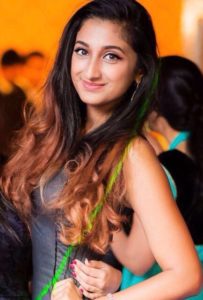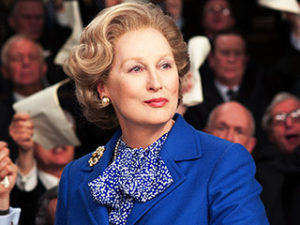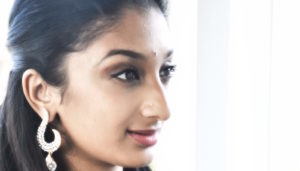Anjana Chandran ”“ Sydney sider making a mark in Indian filmworld
By Sudha Kumar
Anjana Chandran is a young Sydney sider of Indian origin. She hails from the state of Kerala. A vivacious young lady who is blessed with a strong aesthetic sense of the performing arts and exudes a passion for ”˜anything art’. A well-known dancer in Sydney circles there is hardly a Sydney stage that Anjana has not taken on in recent years. The audience would vouch for the fact that she is one who dances any story from her soul with pure joy!
Earlier this year Anjana completed a Malayalam film ”˜Crossroad’ due for release on 13 October 2017. It is not very often that a young person still in the threshold of adult life finds films as a way to express herself, and even more special when it happens to be in the films of her native tongue and country.
Here are excerpts of my conversation with Anjana:
Sudha (SK): Congratulations Anjana on your new Malayalam film CROSSROAD. You have made a mark into the Malayalam films. Tell me about yourself.
Anjana(AC): Thank you so much. To begin with my name is Anjana Chandran. I am a Media, Communications and Journalism student from UNSW. I was born in Kerala, India and have been residing in Australia for the last 20 years.
In my family I have ”“ Mum, Dad and an elder sister who is married and settled in Melbourne. I am a lover of arts, all things art. Passionate about it. And hopefully would like to get into philanthropy at some point.
SK: What can you tell us about your film “Crossroad”?
AC: “Crossroad” is a Malayalam anthology film that is best described as a union of ten short films. The recurring motif in all 10 films is the woman at the heart of each story. Each of the ten stories revolve around one woman or two- How they find themselves at a crossroads in their life and how they face the trials and tribulations that occur. The film in which I play the lead is titled “Pinpe Nadappaval” and is directed by the famous Indian (Malayalam) director Mr. Lenin Rajendran and cinematography is by Mr. Madhu Ambat – who is a very versatile director of photography and has won Indian National Awards. The movie “Crossroad” is expected to be released on 13 October 2017.
SK: For a young person brought up in Australia, what motivated you to venture into Indian films?
AC: The passion started very young. Both my parents are avid fans of Indian cinema especially Malayalam, Tamil and Hindi films. So I grew up engrossed in that kind of culture. And eventually it led on to testing the waters with dance, singing and drama. Now it’s a bit more full-fledged.
SK: As you step into the world of cinema, and the world sees you in a different light, how do you feel?
AC: I don’t think I have gotten to that level of exposure so I don’t see a significant shift in how the world perceives me. But I can say because I grew up here in Australia and my passion for dance and singing and art begun here with all the people around me. They have seen me grow up”¦and seen my steady progress. Their pride and joy in seeing me do things that I enjoy, and excelling at it, make me very happy and content with myself.
SK: Your favourite actor/actress
AC: That’s an easy question”¦.. Meryl Streep.
SK : Why?
Meryl Streep is a versatile actress; she changes and carries herself through each film differently, not the same Meryl! She’s a chameleon. Also her hard work, her work ethic is very inspiring to budding actresses.
SK: What is the role of Meryl Streep that stands out for you?
AC: That’s a daunting task to pick one, but I would say the one where she played Margaret Thatcher ”“The Iron Lady.
SK: Your favourite music band?
AC: Was a band, now a solo artist”¦ transcends all genres, all cultures. Beyoncé all the way!!
SK: Technically “Crossroad” is not your first film. You made your debut into Malayalam film world a few years ago in 2008, through another Malayalam film ”˜Kurukshetra’. Tell us about that.
AC: Kurukshetra was directed by Major Ravi with Malayalam megastar Mohanlal in the lead. It was a huge banner and I played the role of a Kashmiri girl called Alma. At 14 years of age, it was a very fresh experience for me. The opportunity came out of the blue. And because of that I suppose I had a spontaneity in the way I approached my role. It was a great memorable experience.
SK: And how has Alma of 2008 changed to become the protagonist of “Crossroad” of 2017?
AC: Alma of 2008 was almost like a fish out of water. I worked with a huge banner and shared the screen with an Indian super star Mohanlal but with my young mind, I did not take it as seriously and so I had more fun than anything else. For me it was like testing new waters.
With Crossroad, my revisit to the world of Indian cinema happened with a more mature approach. I’ve grown up since 2008 and so I was more serious about the character I played and I had a better understanding of what a huge deal it was to be working with a cast and crew of legends in their fields.
SK: During the making of “Crossroad”- what was your most inspiring moment and your most challenging moment?
AC: With Crossroad, every moment on set was inspiring. The hard work on everyone’s part. It was shot in Chitranjali studios in Trivandrum, India. The Arts team put together a massive stage in the studio, which was captured beautifully by the cinematographer and his team. The assistant directors helped me recite lines and work on my accent and voice modulations day in and day out and of course the director guided me throughout the whole process. Everyone’s hard work and benevolence was truly inspiring and I gained a lot of experience.
Challenging moment”¦ I speak Malayalam. Quite fluently, I’m proud to say. But this story required me to master a niche dialect with a specific accent spoken in northern Kerala, Kozhikode, in just a few days. That was the most challenging. Also having to place myself in the shoes of a very young girl brought up in an Orthodox Muslim family who was being married off. It was very challenging for me, because at some level, I had to identify with that character.
SK: That is so interesting. Anjana, did you have to go through an audition test for this role?
AC: Yes, I did! They were looking for someone with a theatre background for the protagonist of this film and I’ve studied drama and theatre previously so I went in and did a screen test in the presence of Lenin Rajendran- Director and Madhu Ambat- cinematographer, which was quite nerve wracking. But I assume I did alright because as soon as it was done they told me they’d see me on the sets the following day! So went ok after all.
SK: Well done! Having performed on the Australian stage, be it Dance or Drama, do you see a common thread in the way art is expressed in Australia and India?
AC: This is really hard for me to comment on because I have not necessarily been on a full-fledged film set in Australia. I have done a few short films and theatre here. But what I”˜d like to believe is that art is universal and so it transcends all differences whether it is culture or language. Work ethic, passion, and perseverance would be the same because it is a human expression regardless of the geographical location of the film set.
SK: Anjana, you are a very versatile dancer. I have seen you on stage over a number of years expressing yourself through different genres of dance including Bharatanatyam, Mohiniyattam and Bollywood. What has the art of dance done for you as a person and as an artist?
AC: First of all thank you for the compliment! I have trained in Bharatanatyam under Smt. Manjula Vishwanath in Australia and also learnt Mohiniyattam (classical dance of Kerala) and done some Bollywood dances. First of all, dance brings discipline, especially in Bharatanatyam (as with most classical Indian art forms) as there are stages and aspects you need to master before moving on up. The learning never stops, one is always learning, but one common thing that they have done for me as a person is tie me and link me back to my culture ”“ my roots. It is through dance that I have learned about Hindu mythology and religion that subsequently enlightened me about aspects of my culture and tied me to my people. It gives meaning to my identity.
SK: If a young girl in Sydney comes and says to you. “I want to be an actress’. how would you respond?
AC: I would be overjoyed to hear that! Who doesn’t love to hear the dreams of others alike? I don’t think I’m at a place to really pass on advice but the truth is there are so many places to put your talent and plenty opportunities out there. I’d tell them to go ahead at full force!
SK: If you are presented with an opportunity to work in an Australian film, what would be your response?
AC: I don’t think my response would be any different to that of offers from Indian film industry. I identify myself as much as an Australian as I do Indian. I’d be very thankful and grateful and obviously if it’s a good story and something that I believe in and proud of, I’d be more than happy to be a part of that.
SK: That’s a great perspective considering ”˜Art is universal’.
Anjana, whether one movie or a hundred movies, ultimately regardless of the characters or stories that you wear or portray on screen or stage, what message would you as a person like to leave behind?
AC: When it comes to movies or music, I believe they have various responsibilities- one of which is entertainment and another is to be part of a movement, to carry a message, to make a stance socially, this movie ”˜Crossroad’ is a good example. It has an idea that I want people to resonate with. This movie is not only entertaining but it is also a movement – ten films, ten filmmakers, ten women and their stories. Good cinema. I want people to take away a good time ”“ entertainment definitely and also a deeper message from those stories. We need to see more women on the big screen.
SK: That is indeed a great statement on the back of Vijayadashami which is the celebration of the goodness and grit of the female/ feminine form that is worshipped in the culture and country that we come from.
I wish all the very best to you and for your life in cinema and the art. It has been a pleasure to speak to you.
AC: Thank you very much and thank you for the opportunity to speak with you today.
Short URL: https://indiandownunder.com.au/?p=9859





